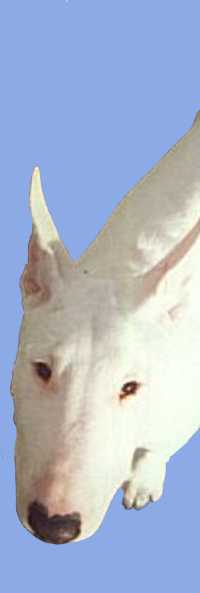 Interdigital Cysts
Interdigital Cysts
Written by T.M Heath
What we know as interdigital cysts are not really cysts at all but abscesses which form in the foot and can indeed go on to affect all four feet. It is usually first noticed when the dog starts persistent licking of the feet which turn a horrible brown with the interaction of the saliva on the skin. If you look closely between the toes you will see the area is red and inflamed, possibly with a small purple area in the center of the red. This is the start of the abscess and will swell and become increasingly painful as the level of pus builds up. This is the point where they are normally taken to the vet who will give them a course of antibiotics which will of course help. However a week or two after the course of antibiotics is finished the whole process starts afresh. Topical applications of creams, ointments and lotions can help in the short term but the only sure way of removing all the pus is to apply poultice type dressings until all the pus has been removed.
In my own personal experience over many years I find the most effective poultice is with good old fashioned Stockholm Tar, which can be purchased quite easily from any store that sells horse products.
For each foot you will need:-
- Stockholm Tar and a blunt knife to apply it
- 1 large pad of cotton wool 8" x 4"
- 3 small pieces of cotton wool for between the toes
- 1 slightly larger piece for between the toes and large pad under the foot
- 1 kling conform 2" bandage 4 strips of E band elastoplast 8" x 3" old sock to cover it if required.
- Hibiscrub to wash the affected areas
The tar is applied to the underside of the foot and a small pad of cotton wool slotted into the space between the toes and the large pad. Take a large pad of cotton wool, sufficient to cover the entire underside of the foot and fold up over the top of the foot. Next apply tar to the top of the foot making sure it goes in between the toes. Small strips of cotton wool is placed between the toes and the large pad of cotton wool is brought up to cover the top of the foot. Apply the cling conforming bandage starting underneath the foot, bringing it up over the foot and commence winding in a spiral to completely cover the cotton wool and hold it securely in place without making it too tight. Cut 4 strips of E band elastoplast approximately 8" long. First is taken from the underside of the foot up over the top of the foot and pressed into place. The second strip now winds round the foot covering all the foot bandage, taking care not to stretch it as you apply it. The third strip is now wound round the upper edge of the bandage allowing about half an inch to adhere to the fur on the leg (this is what stops the bandage from sliding down and can be easily removed with "ZOFF" adhesive remover wipes) The last strip goes in the middle to cover any exposed bandage. A sock over it can be used to keep it clean and a poly bag for wet conditions but please do not leave poly coverings on all the time as these sweat the feet and can cause problems as well a risk that the dog removes it and swallows it causing obstruction or killing it.
This dressing is left in place for 4 days. Please do not get worried if the foot looks red and raw when you remove the bandage as the foot will resume its normal colour in a matter of hours. Wash the foot in febiscrub ( which can be purchased in any chemist ) and dry with a towel. The foot is left undressed for three days and the dressing applied as before. ie. dressing 4 days on - 3 days off. This is very important. Stockholm Tar removes the extra growth of keratin which is causing the toes to look deformed and should the dressing remain in place for too long it will make the dogs pads too soft for comfortable walking. The 3 days with the dressing off prevents this happening. The average dressings required to clear the infection is three but more may be required if the infection has tracked up the leg (cellulitis). If the dressings have been applied until all the infection has cleared I would not expect a recurrence of the condition.
Lesions erupting on the face, hocks and elbow which can sometimes occur at the same time as the interdigital cysts can be treated by washing with hibiscrub and applying antiseptic ointment. Lesions on the elbows and hocks take a long time to shift even with daily treatment as these are very deep seated and difficult to treat as these areas are impossible to bandage.
« Back to medical articles
